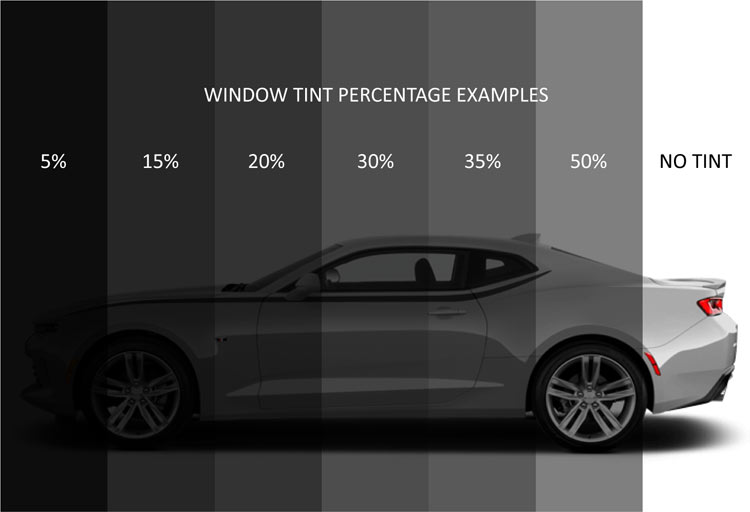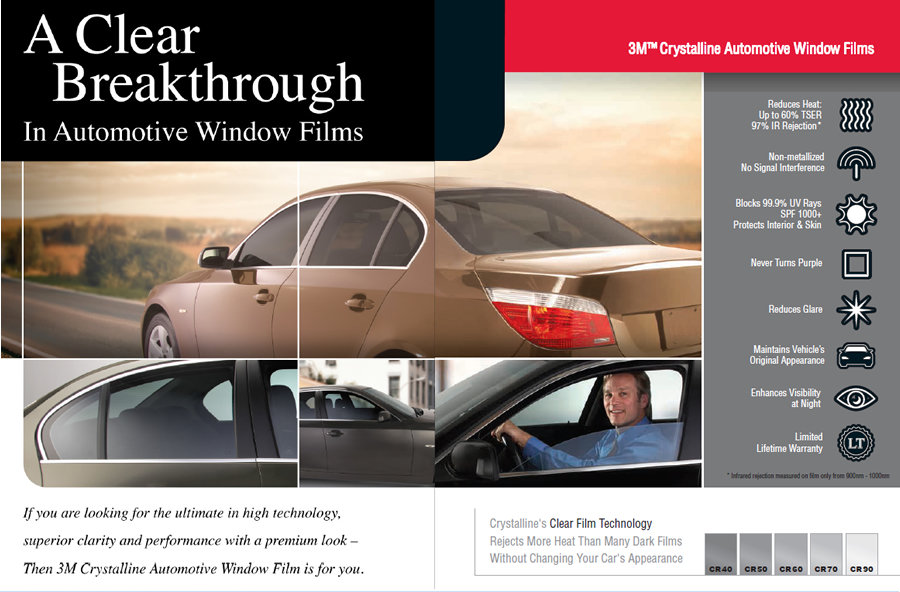How automotive window tinting clinton township Improves Energy Efficiency While Enhancing Style
Wiki Article
Whatever You Need to Understand About Vehicle Window Tinting for Your Vehicle
Car home window tinting is a practical enhancement for numerous lorry proprietors. It uses advantages such as enhanced comfort and energy performance. Numerous tint films deal with various requirements and preferences. Nevertheless, understanding legal regulations and choosing the appropriate tint percent is crucial. The installation process and proper upkeep additionally play considerable duties in making sure the durability of the tint. What various other aspects should one take into consideration before making a decision on home window tinting?Benefits of Auto Window Tinting
Although some car proprietors may neglect it, car window tinting deals various benefits that improve both the driving experience and the lorry's durability. Among the key benefits is the reduction of heat build-up inside the lorry, permitting for an extra comfortable ride, especially throughout heat. This can cause reduced dependence on air conditioning, improving fuel efficiency.Additionally, window tinting supplies protection against unsafe UV rays, which can cause skin damages and discolor indoor products with time. By blocking these rays, the color helps maintain the vehicle's interior and preserve its resale value.Moreover, colored windows can improve personal privacy and safety, as they make it harder for outsiders to see inside the car. This added layer of defense can prevent possible burglary. Generally, auto window tinting functions as a practical financial investment that adds to both comfort and the automobile's overall wellness.
Sorts Of Window Tint Films
When thinking about car window tinting, lorry proprietors encounter a selection of window color movies, each designed to satisfy specific requirements and preferences. The first group is dyed window film, which supplies a standard level of personal privacy and UV security while being cost-effective. Next off, metalized films include small metal fragments, reflecting heat and boosting toughness, although they might hinder electronic signals.Ceramic movies are another choice, understood for their remarkable heat denial and quality, providing high efficiency without signal disturbance. Hybrid films combine features of dyed and metalized films, striking an equilibrium between expense and functionality. Each type of home window color film presents one-of-a-kind advantages, enabling automobile owners to pick based upon their particular demands, such as warm control, look, and spending plan considerations. Comprehending these options is crucial for making a notified choice pertaining to car window tinting.Recognizing Lawful Regulations
When considering car window tinting, it is essential to recognize the legal guidelines that regulate tint darkness restrictions and windshield color requirements. These guidelines can vary considerably from one state to another, affecting what is acceptable for car owners. Familiarizing oneself with these regulations assurances conformity and helps stay clear of possible penalties or fines.Tint Darkness Limitations
Just how can lorry proprietors assure they remain compliant with local legislations relating to window tinting? Understanding color darkness limitations is important. Each state has certain policies that dictate the allowable degrees of darkness for home window colors, which are determined by Visible Light Transmission (VLT) percentages. Generally, front-side windows need to enable a greater portion of light compared to back home windows. Some states may permit just 30% VLT for front windows, while the back windows might be allowed to have especially darker tints. To ensure compliance, vehicle owners ought to speak with state guidelines or regional legislation enforcement for precise details. In addition, certified tinting experts can offer insights concerning legal limits, making sure that vehicle owners make informed decisions.Windshield Tint Laws

State-Specific Laws
Guiding via the landscape of state-specific regulations pertaining to vehicle window tinting needs mindful interest to detail, as laws can vary considerably from one state to one more. Each state has its own set of policies regulating allowed color percentages, sorts of products, and positioning on vehicle home windows. Some states allow darker colors on rear home windows while forbiding them on front windows, while others have stricter general limits (automotive window tinting clinton township). Additionally, specific states mandate using specific products or call for certification from installers. Failure to abide by these policies can lead to penalties or the requirement to eliminate non-compliant tint. Vehicle proprietors should consult their state's Division of Motor Vehicles or pertinent authority to ensure adherence to regional regulations.Choosing the Right Color Percent
When picking the appropriate tint portion for a car's home windows, one need to consider various factors that influence both aesthetic appeals and functionality. Color portions generally vary from 5% to 70%, with reduced percents giving darker tones and greater percentages permitting more light in. A darker color can improve personal privacy and minimize glow, while a lighter tint can preserve exposure and abide by lawful restrictions.Furthermore, individual choice plays a significant role in this choice. Some people may choose the streamlined appearance of darker colors, while others might favor an extra open, airy feel. Furthermore, the automobile's function need to be thought about; for circumstances, those using their automobiles for business objectives might choose lighter tints to keep an expert look.Ultimately, the ideal tint portion equilibriums personal design, comfort, and adherence to regional regulations, making certain a satisfying tinting experience.The Installment Process
An effective installment of home window color needs careful interest to detail and the right devices. The process typically starts with extensive cleansing of the home windows to get rid of dust, dust, and particles, ensuring appropriate adhesion of the movie. Once the surface areas are prepared, the installer procedures and cuts the color film to fit each home window accurately.Next, the movie is placed on the glass, commonly making use of a remedy to help with simple change and stop air bubbles. Warmth is in some cases put on the movie to conform it to the window's curves, enhancing its appearance and long life. After validating a seamless fit, the installer diligently cuts any kind of excess movie along the edges.Finally, the installer checks for flaws and validates all sides are secure. This careful method is vital not just for aesthetic appeals yet also for attaining the wanted performance advantages of window tinting, such as UV defense and heat reduction.
Maintenance and Treatment for Tinted Windows
Appropriate upkeep and care are necessary for preserving the integrity of tinted windows. Effective cleaning methods, the avoidance of damaging chemicals, and regular assessments for damages play vital roles in making certain durability. By complying with continue reading this these standards, car proprietors can keep the practical and aesthetic advantages of their window tint.Cleaning Up Techniques for Tint
Maintaining the clearness and long life of tinted windows requires specific cleaning strategies customized to the film's fragile surface area. It is essential to use a soft microfiber fabric to stay clear of damaging the color while cleaning. A gentle remedy of water and a view publisher site few drops of moderate recipe soap can efficiently get rid of dirt and grime. It is advisable to apply the cleaning service to the towel, as opposed to directly onto the tinted surface area, to avoid wetness from leaking into the edges of the film. Mild, circular motions should be used to clean up the home windows completely. Normal cleaning aids keep presence and avoids buildup, making sure that the tint continues to be in prime problem over time. Following these techniques will extend the life of tinted windows.Staying Clear Of Hazardous Chemicals
Lots of home cleansing products are effective on various surfaces, they can position significant risks to colored windows. Chemicals such as ammonia, bleach, and specific solvents can deteriorate the color movie, causing discoloration and peeling. Individuals must select pH-balanced cleansers especially created for tinted home windows. Furthermore, using soft microfiber fabrics will aid avoid scratches and preserve the tint's integrity. Routine maintenance is essential; as a result, preventing extreme scrubbing or abrasive materials is important. It is suggested to read product tags very carefully to confirm compatibility with window colors. By selecting the best cleaning solutions and devices, car proprietors can maintain the appearance and functionality of their tinted home windows, assuring a much longer lifespan and optimal performance.Checking for Damages
Routine examinations of colored home windows are vital for identifying any kind of indications of damages that may endanger their effectiveness and look. Owners must search for bubbling, peeling, or discoloration, as these issues can show inadequate setup or direct exposure to damaging components. It is suggested to examine the edges of the movie where peeling may start and inspect for any type of scrapes that might impact visibility. Additionally, ultraviolet (UV) rays can create the tint to weaken with time, so monitoring its efficiency in blocking UV light is essential. If any type of damages is spotted, punctual action must be taken, which may include specialist fixing or replacement. Preserving colored home windows not only enhances looks but likewise assurances proceeded protection for both travelers and the car inside.Usual Myths About Window Tinting
What mistaken beliefs surround home window tinting for vehicles? Several individuals believe that all window tints are unlawful, but guidelines differ by state, enabling for certain levels of tinting. One more typical misconception is that darker colors obstruct more warmth; nevertheless, the efficiency of home window movies depends upon their modern technology instead of darkness. Some individuals additionally believe that window tinting is exclusively for aesthetic appeals, overlooking its benefits, such as UV protection and glow reduction. Additionally, lots of presume that home window tinting will certainly damage their automobile's glass, yet properly applied tints can really enhance glass toughness. There is a belief that home window colors obstruct exposure, yet high-grade movies are designed to keep clear sightlines while supplying privacy. Recognizing these misconceptions aids consumers make notified choices relating to home window tinting, ensuring they appreciate the full series of advantages it uses.Often Asked Questions
Just How Long Does Window Tinting Usually Last?
The longevity of home window tinting differs based upon aspects such as installment high quality, movie kind, and environmental conditions. Normally, top quality tint can last anywhere from five to 10 years before calling for replacement or reapplication.Can I Get Rid Of Window Tint Myself?
Getting rid of home window tint oneself is feasible, though it may be challenging. Individuals need to make use of a warmth resource and adhesive eliminator to relieve the process, however caution is advised to avoid harming the vehicle's glass or interior.What Devices Are Needed for DIY Window Tinting?

Will Home Window Tinting Damage My Auto's Glass?
Home window tinting, when applied correctly, usually does not damage an automobile's glass. Nevertheless, improper setup or low-quality films may lead to peeling, gurgling, or scraping, potentially jeopardizing the honesty of the glass over time.Can Tinted Windows Influence My Vehicle's Resale Value?
The influence of colored windows on a lorry's resale worth can differ. While some customers appreciate the added personal privacy and UV protection, others might view it as a prospective problem, potentially influencing resale positively or adversely. When considering vehicle home window tinting, vehicle proprietors encounter a range of window tint movies, each made to satisfy particular requirements and preferences. When considering automobile home window tinting, it is important to recognize the legal policies that control color darkness limits and windscreen tint demands. Commonly, front-side windows must enable a greater percent of light contrasted to rear windows. Some states may enable just 30% VLT for front home windows, while the rear windows may you could look here be permitted to have especially darker colors. Some states permit darker tints on rear windows while forbiding them on front home windows, while others have more stringent overall limits.Report this wiki page